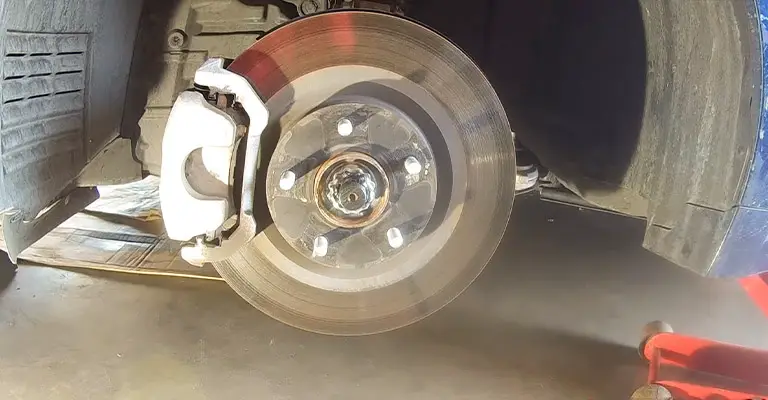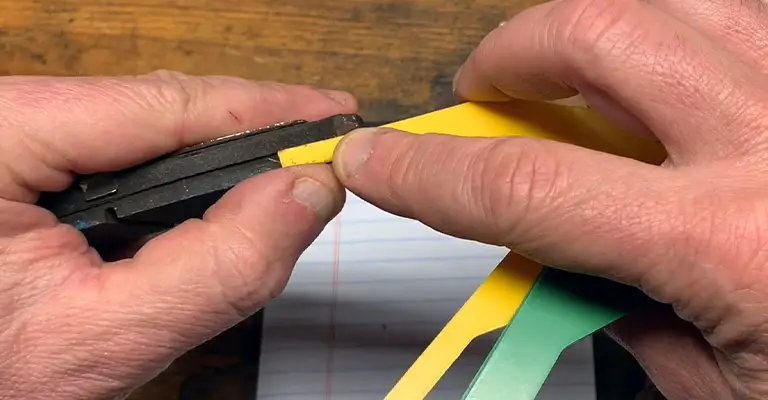If you are hearing a squealing sound from your brake, it might be a sign of a worn-out brake. Grinding in the padel, shaking of the steering, sudden turning on of indicator light are the major signs of worn-out brake pads. Experience says you’ll eventually hit on at least one of them as you exceed the 50 thousand miles cumulative journey.
Contents
- 1 8 signs | How do I know my brake pads are worn out
- 1.1 High-pitched noise from your brake
- 1.2 Grinding in the padel
- 1.3 Shake or vibration of the steering wheel
- 1.4 Fluid leaking from the brake system
- 1.5 Detection of any burning smell
- 1.6 Bouncing of the vehicle up and down when braking
- 1.7 Brake pads less than a ¼ inch thick
- 1.8 The indicator light appears to be on
- 2 What happens if you never change brake pads?
- 3 Can you drive without a brake pad?
- 4 How long do brake pads last in km?
- 5 How to check brake pads?
- 6 How to tell if brake discs need replacing?
- 7 At what thickness in mm should brake pads be replaced?
- 8 FAQ
- 9 Conclusion
8 signs | How do I know my brake pads are worn out
Most common signs count eight, but each may couple with a couple more. Give a thorough check before you burn your rotors out

High-pitched noise from your brake
When your brakes are getting worn out, the metal of the braking system starts to touch the metal of the brake rotor. And so, when pressing the brakes you will hear a high-pitched noise from the friction of the two metals. This is just to warn the driver that the brake pads are worn out.
Grinding in the padel
If you hear any grinding sounds when you apply the brake then it is the most dangerous warning sign. This noise is created when the braking system scraping with the rotors.
Shake or vibration of the steering wheel
If you find any vibration from the steering wheel or brake padel when applying your brakes then this is a sign of a worn-out brake pad.
Fluid leaking from the brake system
Brake fluid is used to create hydraulic pressure. And the Master cylinder is the storehouse of braking fluid. The master cylinder is the system that creates the power for your brake.
When you apply the brake, the brake fluid is pushed through the master cylinder. If this fluid starts to leaking, then the master cylinder will not able to create power for your brake. It is one of the common reasons for brake pads becoming loose.
Detection of any burning smell
If you smell any burning smell from your wheels it must be the brake fluid is boiling which can cause brake failure.
Bouncing of the vehicle up and down when braking
At the time of stopping your vehicle if it feels like your vehicle jerks to a stop or pulls down the other side then it’s a sign of worn brakes.
Brake pads less than a ¼ inch thick
The brake pads should not be less than a ¼ inch thick. If it appears less than a ¼ inch thick it’s an indication that you need to be replaced soon you’re worn-out brake pads.
The indicator light appears to be on
Nowadays every modern vehicle comes with a brake indicator light. It’s also called a brake system warning light. When any issues found in the braking system it’s appears to be on.
What happens if you never change brake pads?
If you never change your brake pads it will affect the rotors. Without brake pads, the whole braking system will overheat and fall which will break or warp rotors. And it will cost very high.
Can you drive without a brake pad?
You can drive without a brake pad but for a short distance and at a slow speed. If you continuously do that it will wear your tires down quicker or cause them to become unbalanced, leading to uneven tire wear.
How long do brake pads last in km?
It normally lasts about a range of 40 to 115 thousand km. On average, brake pads last about 40 to 50 thousand km. But the number depends on your vehicle, especially rotors and your driving habits.
How to check brake pads?
You can check your brake pads in two ways. Firstly, taking off your vehicle wheel. And secondly, measuring the thickness of your vehicle brake pads with a straw without taking off the wheel.
Measuring the thickness of brake pads with a straw
First of all, try to find out rotors and caliper. Then, carefully, put a straw between the rotors and caliper. Continue pushing the straw until it touches the brake pad. When it comes to a stop, use a vernier scale to get the accurate measure.

How to tell if brake discs need replacing?
You need to replace your brake discs from time to time. You have to replace your brakes, extremely over winter because of the wet streets. New brake pads normally have teeth, grooves, and special patterns.
But after using nearly 6 months the aforementioned patterns will fade away. If the pattern faded away then the grip won’t help you to brake your vehicle. And you need to replace it.
At what thickness in mm should brake pads be replaced?
A new brake pad should be 8 mm – 10 mm thick. Ideally, your brake pads need to be a minimum of 6.2 mm – 3.2 mm thick to work properly. But if your brake pads are thicker than 3.2 mm it’s an indication of worn pads. And you have to replace them as soon as possible.
FAQ
What do worn-out brake pads look like?
The new brake pads have teeth, grooves, or particular patterns. The thickness of the new brake pads is nearly 8 to 12 mm. But a worn brake pads groove or pattern became fade away and the thickness is less than 3.2 mm.
How much does it cost to fix brake pads?
The cost to fix brake pads depends on the vehicle. The average cost is about $150 to $300. Subtle enough, but the price varies.
What happens to the rotors if I drive with worn-out brake pads?
Brake pads and rotors work together to stop your car. When you brake, the brake pads squeeze the rotors to stop your vehicle. But if the pads are worn, the vulnerable metal on the pads grinds against the rotors every time you brake.
Conclusion
Avoiding unnecessary heavy braking and keep your speed low in heavy traffic. To prolong brake pads lifetime remove unnecessary weight from your vehicle and coast as much as you can. These are the few small changes in your driving style that will not only make you a safer driver but also help you to make your brake pads last longer.
